What fertilizer for tomatoes to choose to get a good tomato harvest?
Tomatoes are very responsive to both soil quality and top dressing. However, the introduction of an excessive amount of various fertilizers for tomatoes is unacceptable. For plants and fruits of tomatoes, it will be better if they are a little "undernourished" than to give an excess dose of nutrients. The best option is a phased application of fertilizers, and top dressing should be done with those elements that are necessary at this stage of the growing season of plants.
Fertilizing tomatoes when planting
Before you start planting, you should select tomato varieties that have proven themselves well in the region. In addition, you can successfully use your own collected planting material from the bushes you like. Selected seeds should be "pickled" with potassium permanganate, since no fertilizers for tomatoes will help if a known diseased plant rises. After that, the seed must be soaked in one of the preparations that stimulate germination, such as Guamat, Zircon, Kornevin or Epin. They not only accelerate seed germination, but are the first, environmentally friendly fertilizers for future sprouts. Being absorbed into the seeds, these preparations supply the microelements necessary for their growth and development. Planting material is soaked for a period of 16-18 hours at a temperature of at least 15 degrees (optimally 22 °). After that, the seeds should be removed from the solution, otherwise they will rot (the seedlings need oxygen). Germinate in a cloth soaked in solution.
You cannot use such a useful fertilizer as wood ash to soak seeds. The mineral salts contained in it slow down the growth of young plants. Potash fertilizers are not used for soaking seeds for a similar reason - they have a depressing effect on seeds and seedlings.
Fertilizer for seedlings
The key to a good tomato harvest is strong and healthy seedlings. A huge role in this is played by timely and correctly carried out feeding.
- It is necessary to pay attention to the soil that will be filled in seedling boxes... It should contain all the substances necessary for the nutrition of young plants. This is the first feeding of tomatoes. Do not allow an excess of nitrogen in the soil. It causes too active growth of green mass, the seedlings will outgrow and weaken, which can significantly reduce the future yield.
- The first liquid dressing is usually carried out when 2-3 true leaves are formed on young plants. To prepare a solution in 10 liters of water, dilute one tablespoon urea.
- The next fertilization of tomatoes is carried out a week after the first liquid feeding. For him, a solution of nitrophoska is best suited at the rate of 1 tbsp. a spoonful of fertilizer per liter of water. The resulting solution is enough to fertilize up to 30 tomato bushes.
- Subsequent dressings are carried out at intervals of 10 -12 days with a solution of nitrophoska (you can use "Agricol No. 3" or "Effekton O") before planting seedlings in the ground.
The main visible signs of nutritional deficiencies are:
- Sluggish, yellow, rapidly falling leaves on tomatoes, as well as a slowdown in plant growth and development, indicate an insufficient amount of nitrogen in the soil. But it should be borne in mind that similar signs can be caused by low temperatures, lack of moisture and poor lighting of seedlings.
- Stems and leaves of young plants acquire pronounced purple tint - means the tomatoes lack phosphorus.
- Leaves that are pale with visible green streaks (chlorosis) warn the gardener that the plants need iron.
If necessary, you can quickly feed the plants by spraying the leaves and stems with a nutrient solution (foliar dressing). A standard solution for this is prepared from superphosphate (1 tablespoon is poured with a liter of very hot water). The resulting solution is filtered off in a day and water is added to 10 liters.
How to correctly fertilize tomatoes in a greenhouse
After planting seedlings on the ridges in the greenhouse, you need to find out: how to fertilize the tomatoes and how often. Only timely and balanced feeding will allow you to get a rich harvest of delicious vegetables. Overfeeding plants should be avoided, as this can have the exact opposite effect.
- Before planting tomato seedlings, fertilizers are applied to the holes - a handful of humus or compost and a pinch of ash. This will be the first feeding of young plants. In the absence of humus, immediately after planting, small tomatoes are watered with "green tea" - an infusion of green herbs with the addition mullein and ash.
- The first liquid feeding is carried out approximately 2-3 weeks after transplanting. For this, a mixture of mineral fertilizers is used: phosphorus - 40 g, potash - 15 g and nitrogen 25 g, which are diluted in 10 liters of water. One liter of the prepared solution is poured under each plant.
- During the period of mass flowering, the following feeding is carried out, which is necessary for the formation of a good ovary. It is prepared on the basis of mullein or bird droppings (0.5 liters), to which a small amount (1 tablespoon) of potassium sulfate is added and diluted in 10 liters of water. In the absence of organic fertilizers, fertilizing is carried out with a solution of nitrophoska (you can use "Solution" or "Kemira-universal." It is advisable to add about 3 g of copper sulfate or potassium permanganate to the liquid fertilizing.
- When the ovary begins to form, the tomatoes are fed with an infusion of wood ash (2 liters per 10 liters of hot water) with the addition of 10 g of boric acid.
- To accelerate the ripening of fruits and improve their taste during the period of mass fruiting, tomatoes are fed with a solution that is prepared from 2 tablespoons of superphosphate and one spoon of sodium humate in a bucket of water.
In the last two dressings of tomatoes nitrogen fertilizers it is highly undesirable to include.
Organic fertilizers
- Cow or horse manure, less often pork manure is the most popular fertilizer among gardeners. It should only be applied after composting.
- Poultry litter - a very strong fertilizer, capable of "burning" the roots of plants if used incorrectly. It is used after composting with straw or peat at a rate of 1: 2, as well as liquid top dressing (10 g of dry manure per bucket of water).
- A wonderful liquid top dressing is herbal infusion (green manure). Green parts of plants (gardeners advise nettles) are poured with water and infused for 2 weeks.
- Peat is a universal regulator of soil moisture (with simultaneous fertilization and structure improvement). It retains moisture on sandy soils and picks up excess moisture on heavy soils. But there are few nutrients in it, so peat is usually mixed with other organic fertilizers.
- Ash, formed by burning branches, straw, firewood or charcoal is called stove and is the most valuable fertilizer. It contains potassium and phosphorus in easily digestible forms, as well as a large amount of trace elements (magnesium, manganese, iron, sulfur, zinc, molybdenum, etc.). When applying the ash, it should be embedded to a depth of about 10 cm, since when applied superficially, it promotes the formation of a soil crust. Do not mix this fertilizer with mullein or bird droppings, lime, phosphate rock, as this reduces the effectiveness of fertilizers.
- The stores have a wide selection of ready-made organic fertilizers: Vermix biohumus, Piksa supercompost, Take a look!, Reliable compost and others.
Mineral fertilizers for tomatoes
Mineral fertilizers for tomatoes are divided into nitrogen, phosphorus and potash.
Nitrogen fertilizers: ammonium nitrate, ammonium sulfate, ammonium sulfate, urea, urea... These fertilizers cause acidification of the soil, therefore, after their use, liming of the soil should be carried out.
Phosphate fertilizers. It is superphosphate in the form of powder or granules.
Potash fertilizers for tomatoes. Usually used potassium sulfate or potassium sulfate. It is not advisable to use potassium chloride and potassium salt, since they increase the chlorine content in the soil, which negatively affects the development of tomatoes and the taste of fruits.
Complex fertilizers
Recently, gardeners are increasingly using ready-made complex fertilizers. These include: diammophos, nitroammophos, ammophos, nitrophoska, Kemira Universal-2, Calcium nitrate, Solution, Universal, Potassium monophosphate and others. Their main advantage is that they eliminate the need to independently make up a mixture of various fertilizers.
Tomatoes, although they require additional attention, are very responsive to timely correct feeding and various agricultural techniques (loosening, weeding, hilling, watering). Therefore, every gardener can grow a good harvest of tasty and healthy fruits.
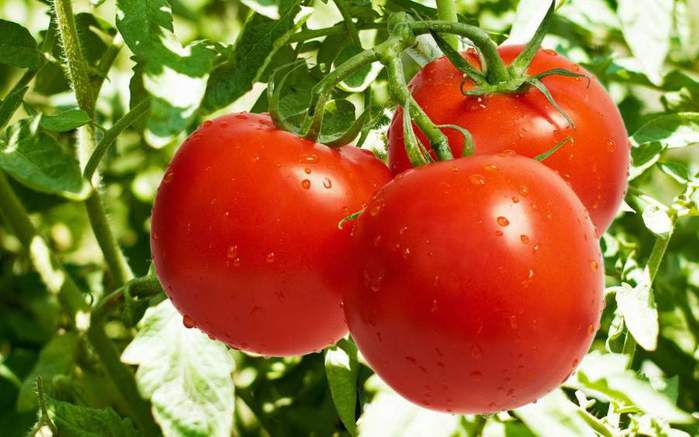

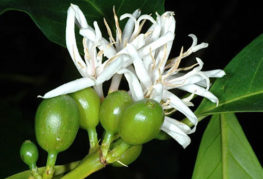
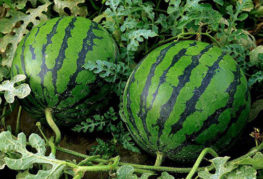
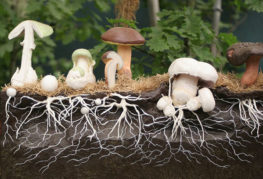
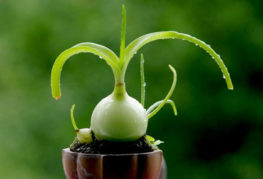
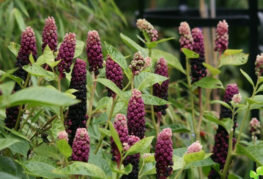
Thanks for the article, very informative! I've always started preparing the soil for planting tomatoes in the fall, so that during planting the land is already saturated with the necessary elements. Practice shows that if you do not prepare the land in advance, then no matter how much you fertilize, there will still be no such result. In general, for tomatoes, as a rule, we use phosphate fertilizers in the form of granules, tested over the years. Once they tried to fertilize tomatoes with manure, but the result is not the same.
We are engaged in growing a tomato in a greenhouse. Previously, they mainly used natural fertilizers, cow and bird droppings, cheap. It is very correctly written in the article that you need to be careful with these fertilizers. The last time we burned the roots with bird droppings. We put the litter on the eye, and that's the result. Everything is good in moderation. Now we use only mineral fertilizers from the store for now.
I feed tomatoes once a week, as a rule, I make sure that the fertilizer contains elements such as manganese, zinc, copper, cobalt. This should be done when the stem is still growing, when the tomatoes appear, it will be too late. Plus, in order to prevent late blight, I spray them twice with iodine solution. Well, do not forget that tomatoes like moderate watering, i.e. it is advisable to water once a day after sunset.
Thanks a lot for the tips 👍👍